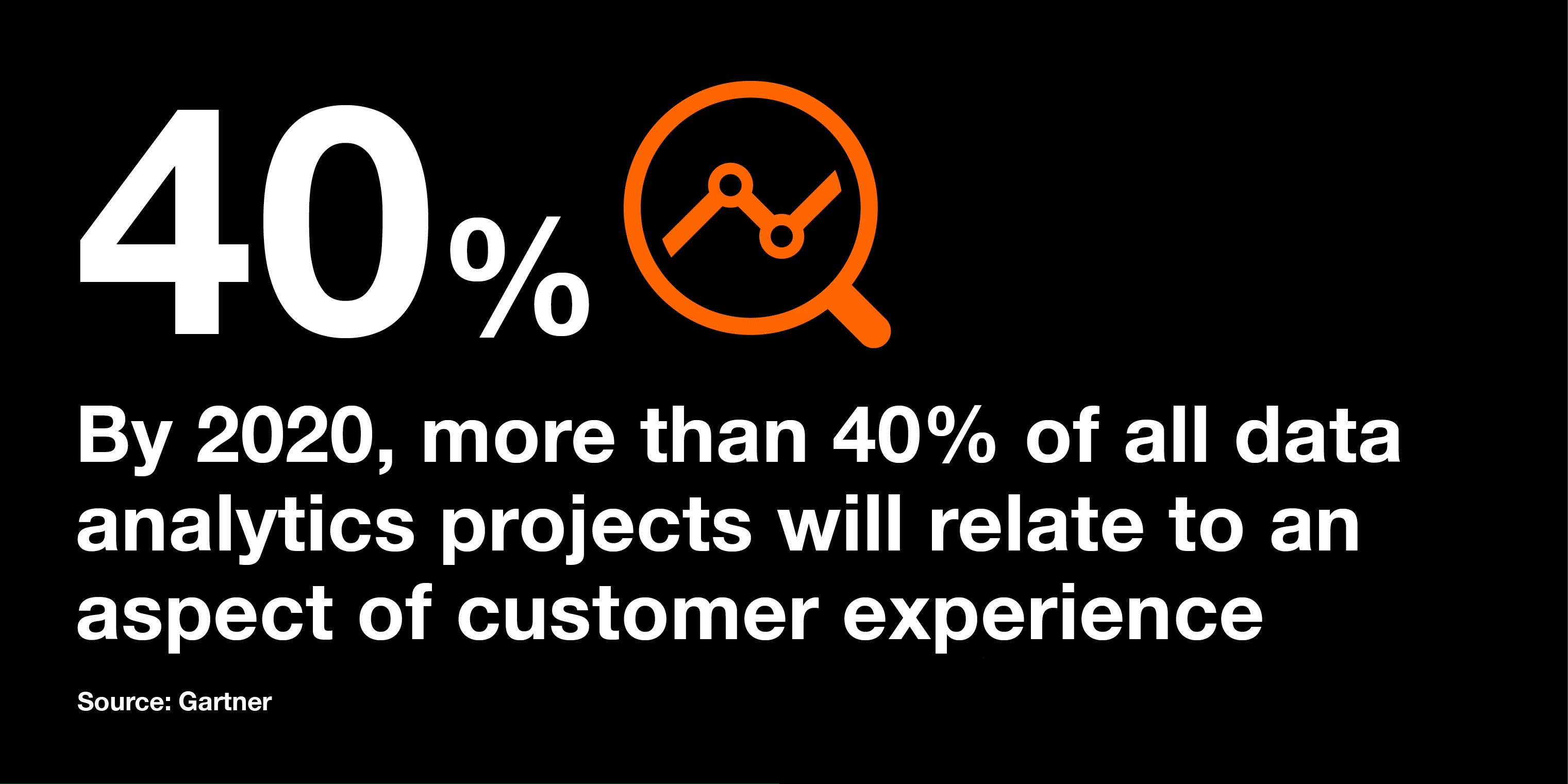Today’s customers expect higher levels of personalization than ever before, and if they don’t get it, they will be happy to take their business elsewhere. In the 2020 Salesforce study “State of the Connected Customer,” 76% of consumers said that they expect companies to understand their needs and expectations. 84% said being treated like a person, not a number, is very important to winning their business. 59% of customers said tailored engagement based on past interactions is very important to winning their business. The message is clear.

What is hyperpersonalization?
It’s the next major step forward in customer service and experience. Consumers have now gotten used to personalized service and enjoying an experience in which the supplier treats them much more as an individual than they had previously. This means companies need to know their customers when they engage with them: calling customers by name, keeping track of their preferences and purchases and using historic data to predict their next round of needs or wants.
Hyperpersonalization can operate as a logical progression of the omnichannel customer journey, where data is gathered from touchpoints along the journey to gather the most relevant information about the customer. This data enables a predictive experience where you can know what customers want effectively before they know it themselves. And the more touchpoints on the journey, the better, because hyperpersonalization is about deciphering much more customer data and acting on it in real time. Customers now want brands they engage with to identify them instantly, to have instant access to information about all the past interactions they’ve had on every channel, and to understand the customers’ issues or want and know how to solve it based on previous data – quickly.
It is about an experience that is personalized to the individual, in which the supplier interacts with an audience of one. They must have in-depth knowledge of the customer, including information like age, gender, geographic location, marital status, habits, hobbies, financial situation and so on. They need to understand the customer’s preferences and affinities for types of products, brands and styles. And there is an emotional element, too: suppliers should have and display an understanding of the customer’s sentiments, their thoughts on past experiences, feelings towards particular brands and products, and even cultural or societal issues and preferences.
The contextual factor
Further to this much deeper level of knowledge and understanding of the customer, hyperpersonalization also requires suppliers to tailor customer offerings using context. This means an understanding of what the customer’s overall goal is and where they are on their customer journey at that moment. Are they still researching products, or are they ready to buy? Do you have enough contextual information on the customer to forecast what they are going to do next? Hyperpersonalized experiences will typically include integrated digital and physical interactions, though in the current climate and depending where in the world the customer is, physical interactions will be reduced due to COVID-19 lockdown restrictions. There’s also a time aspect, which is about engaging with the customer at their point of deciding: in hyperpersonalization you want to pitch something to a customer at the most opportune moment, not “just” in real time.
What is hyperpersonalization not?
Hyperpersonalization is not customer profiling, and it should not be confused as such. Profiling has played a role to this point but is no longer sufficient to deliver on the expectations of more demanding customers. Profiling has given companies an idea of certain customer traits, but in a much less detailed way than using specific customer history and real-time context. Hyperpersonalization lets companies drill down deeper and identify more nuanced details that profiling cannot.
What does hyperpersonalization look like?
Good examples can be had from the B2C world, where companies like Amazon have been giving customers a hyperpersonalized experience for some time. Product recommendations are perhaps the most common example of hyperpersonalization, with an artificial intelligence (AI) engine being used to analyze mass data and spot consumer purchase trends, then offer recommendations based on what other shoppers with similar interests have purchased. Netflix and Spotify use similar mechanisms to recommend content to customers. It’s a data-powered approach that B2B e-commerce companies can imitate, leveraging existing historic data to power their own recommendation engines.
User account customization is another hyperpersonalization technique and something else used by Spotify. The app encourages users to build their own libraries of music and playlists, driving regular usage and loyalty in customers. B2B companies can replicate this and drive customer loyalty by making customization an intuitive part of their offerings.
The next level of customer care
According to Adobe, 97% of business leaders believe customer experience management is an integral business strategy to create loyal and long-lasting customer relationships. In the era of CX as competitive differentiator, however, it isn’t enough to just do what you think customers might want. You need to use data and analytics to understand customers more fully and utilize digital tools like AI to create authentic interactions that will keep customers satisfied and coming back again and again.
Hyperpersonalization is the technique companies should now use to tailor sales and marketing to individual customers. By creating custom, targeted experiences through use of data, analytics, AI and automation, companies can send contextualized communications to specific customers at the right place and time on the customer journey, and via the right channel. Hyperpersonalization can help companies engage customers in more meaningful ways, make existing relationships stronger and improve the customer experience on a continuous basis. According to McKinsey, “companies should make hyperpersonalization in customer care a top goal for 2025,” and by 2025, this next evolution of customer care will provide, “White glove customer service for all.” Hyperpersonalization is the next customer experience imperative.